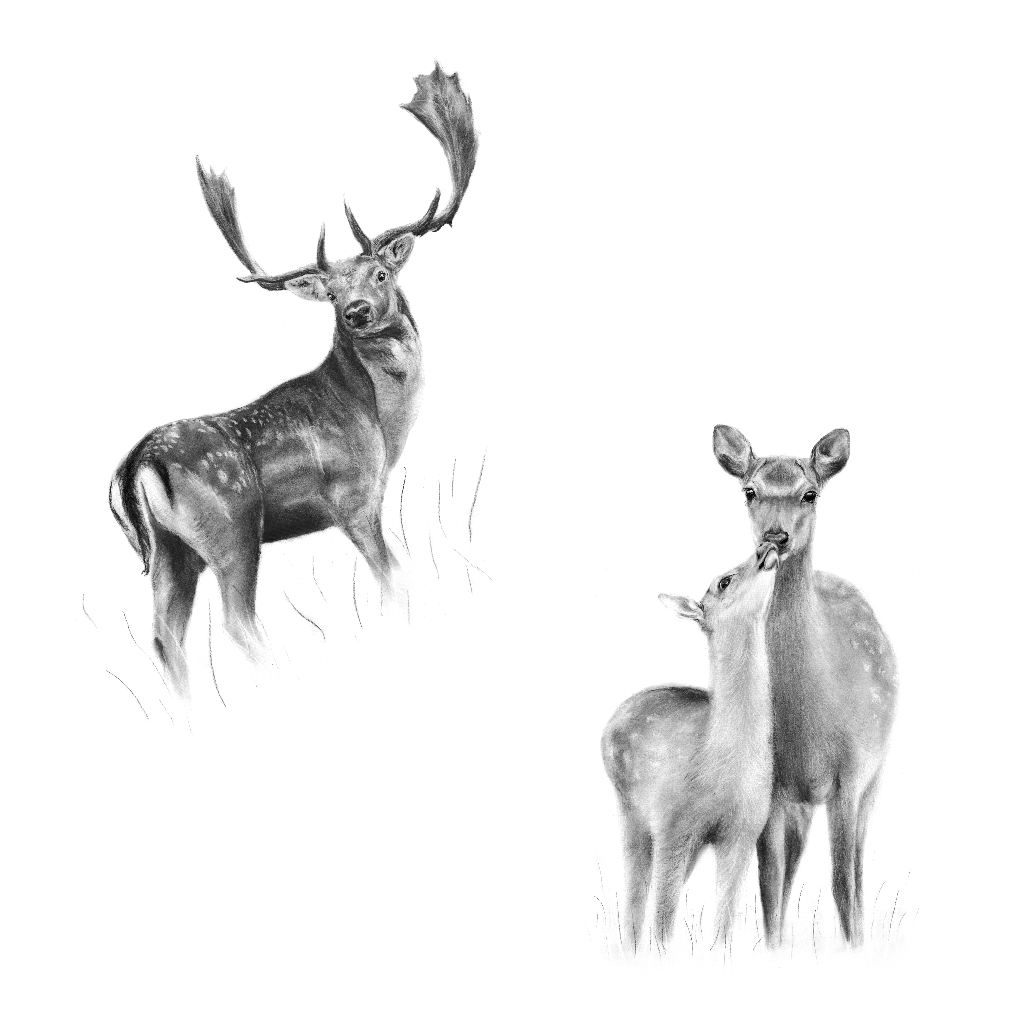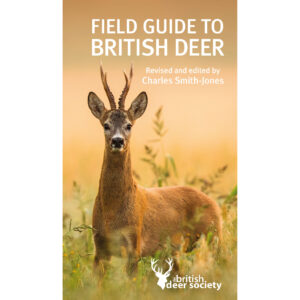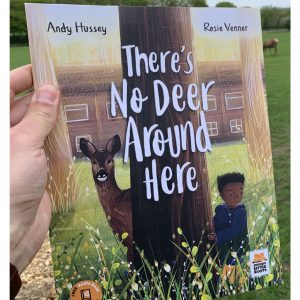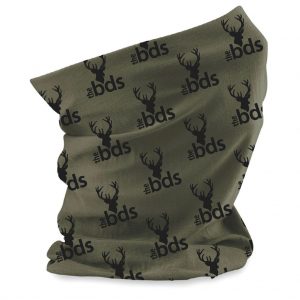ABOUT REINDEER
Wild reindeer will not be encountered in this country although the British Deer Society (BDS) often receives queries about the species. The reindeer, also known in North America as caribou, is no longer native to Britain although there is a free-ranging domesticated herd in the Cairngorms of Scotland.
Reindeer are one of the larger deer species. There can be considerable variation in size but on average males (bulls) may stand around 120cm at the shoulder and weigh in the region of 160kg. Females (cows) are smaller at around 108cm and 120kg respectively.
The colour of the coat can vary considerably between white and a dark greyish brown. The underside is lighter. Old bulls tend to have a pale neck which can develop a long mane in winter. The tail and ears are short and the tip of the nose or rhinarium, normally bare on other species of deer, is covered by fine hair. The foot bones of both sexes click loudly as the animal walk; it is believed that this enables the herd to stay in contact during long periods of darkness. They have broad, flattened hooves which are specially adapted for travelling in snow and boggy terrain.
The reindeer is unique among the world’s deer in that both sexes habitually grow antlers, although those of the cow tend to be smaller and they have different cycles for casting and regrowth. Old bulls may start to cast their antlers as early as November, while cows usually retain theirs until they give birth in the spring.
120cm
HEIGHT AT SHOULDER
160kg
WEIGHT (UP TO)
By comparison, an average adult man in Britain weighs 79kg.
15-18 yrs
AVERAGE LIFESPAN
In the wild, females live to an average of 15-18 years, whilst males live to an average of 10-12 years.
24 FASCINATING FACTS ABOUT REINDEER
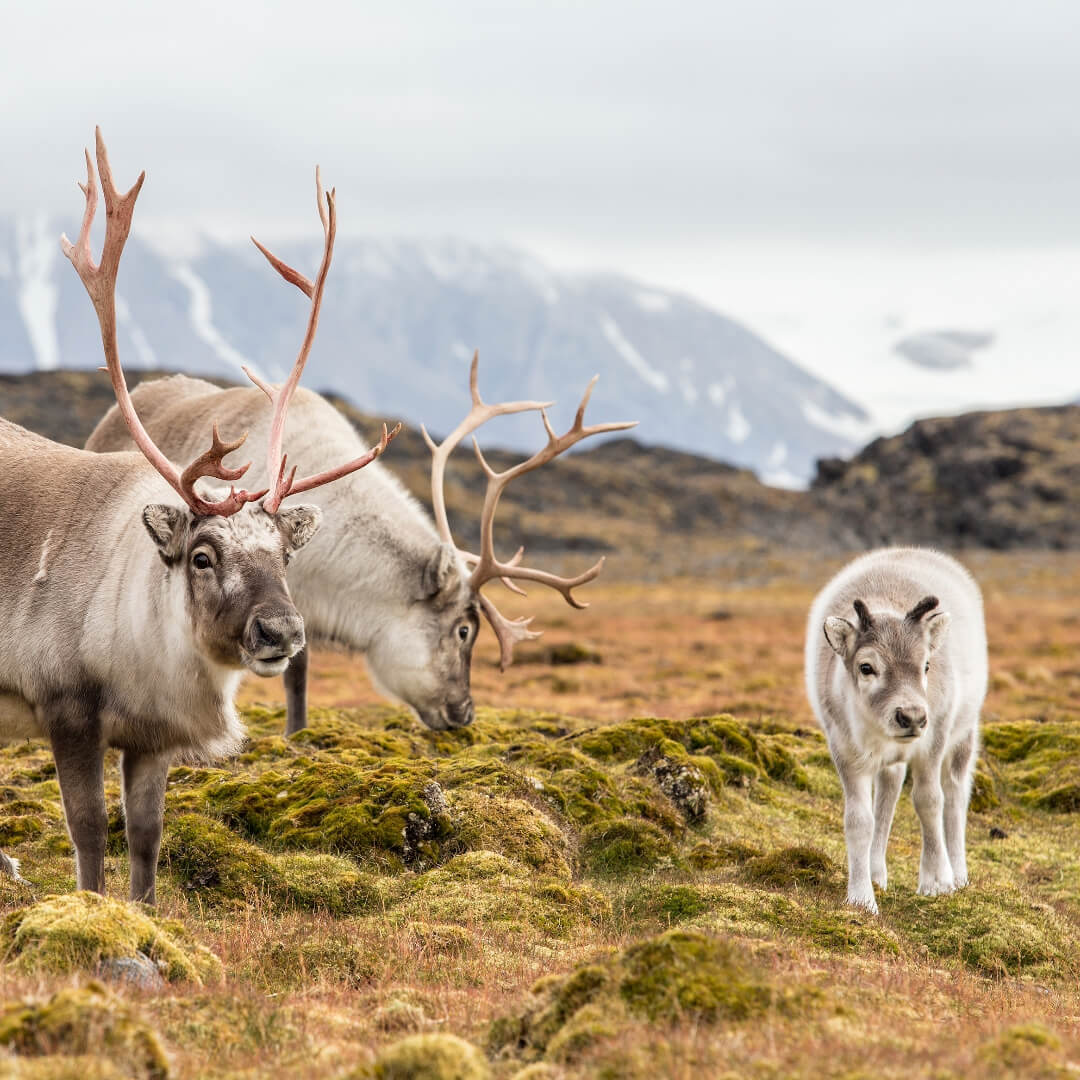
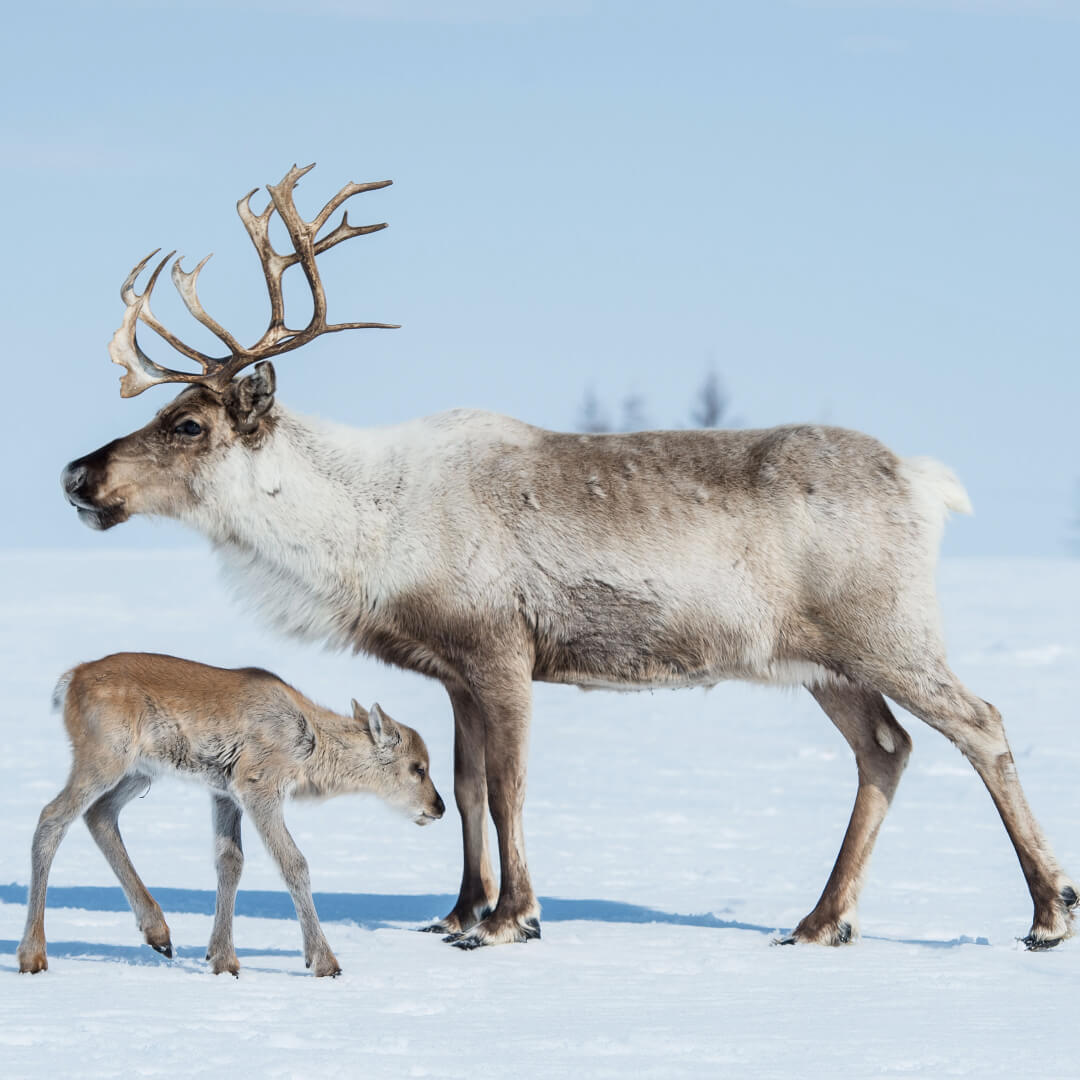
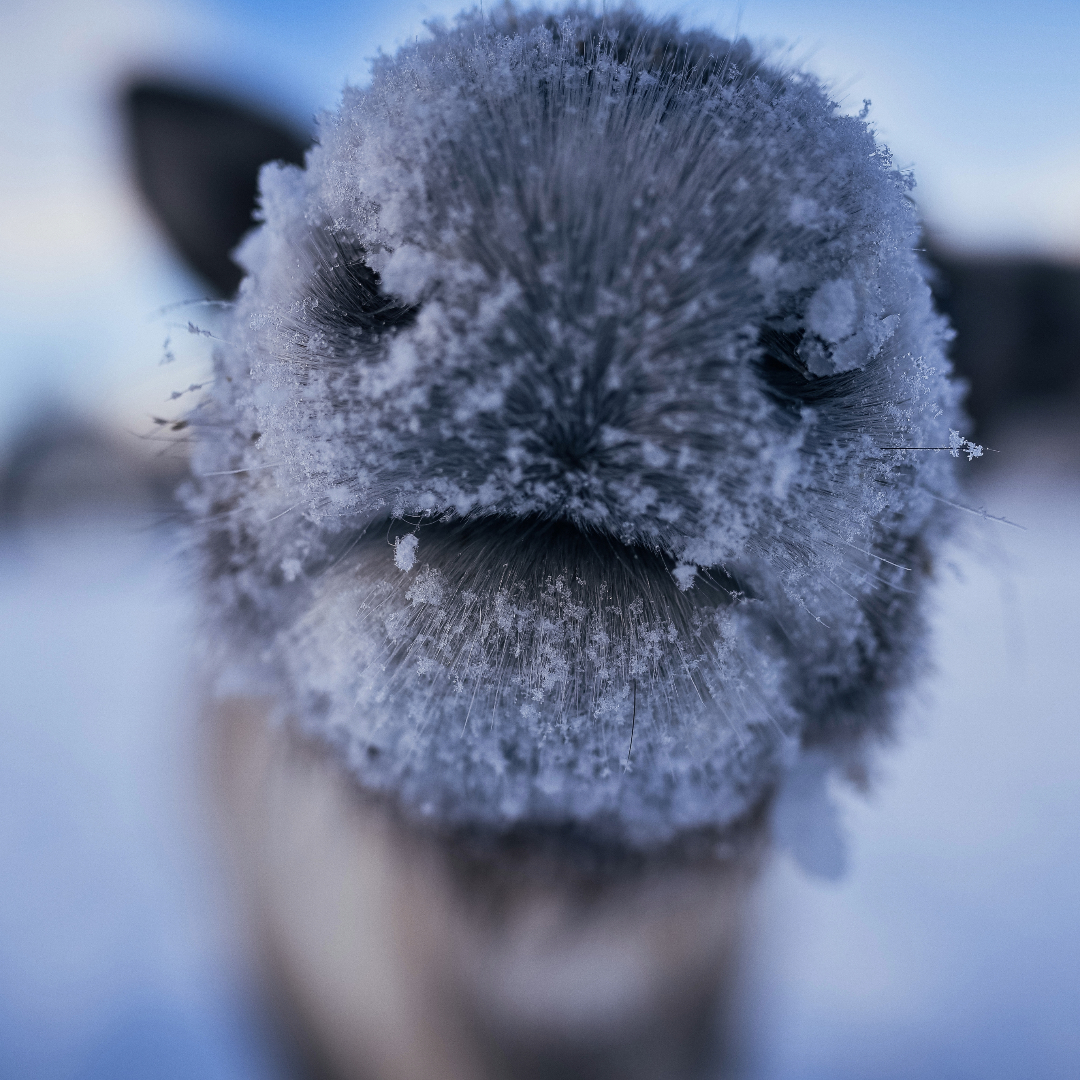

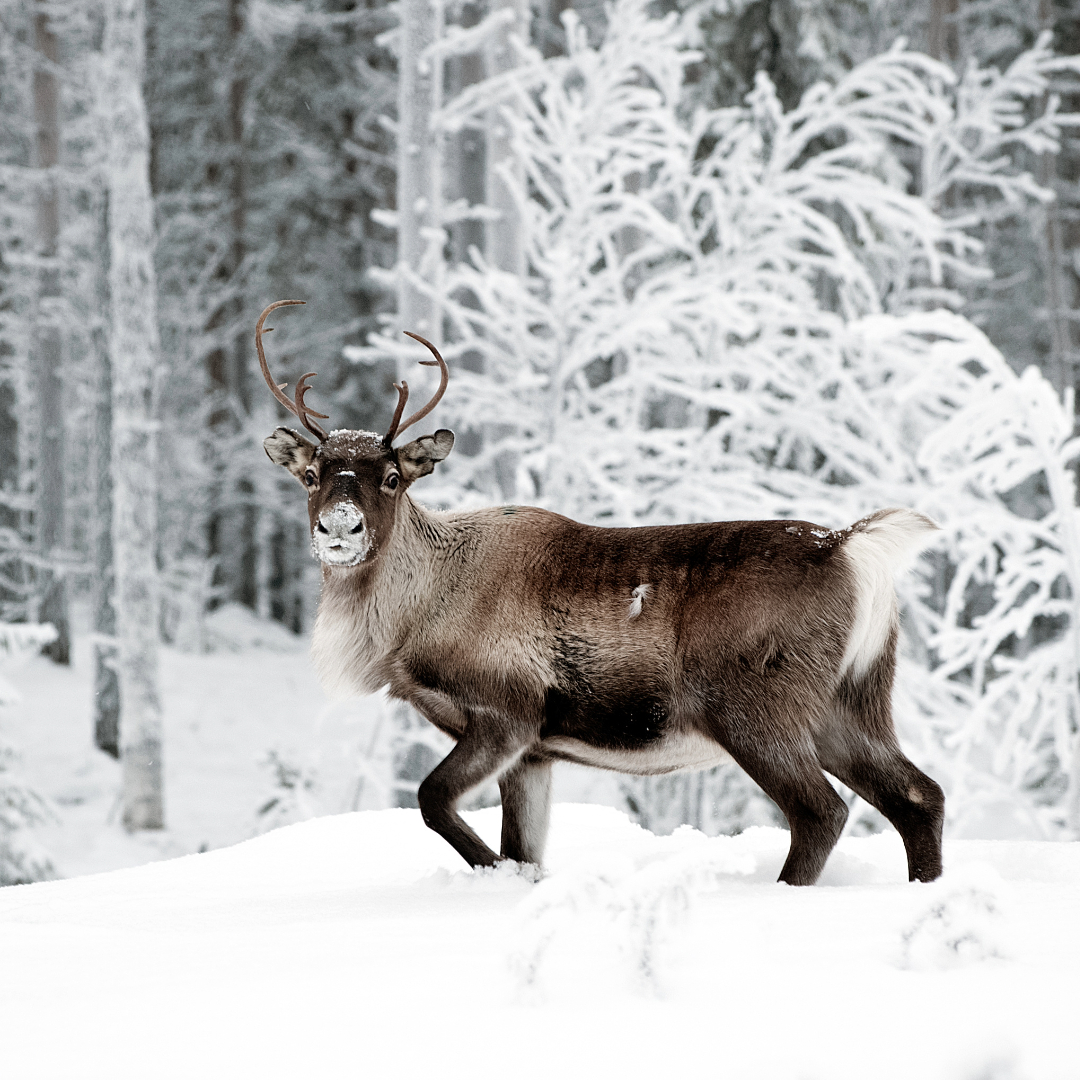


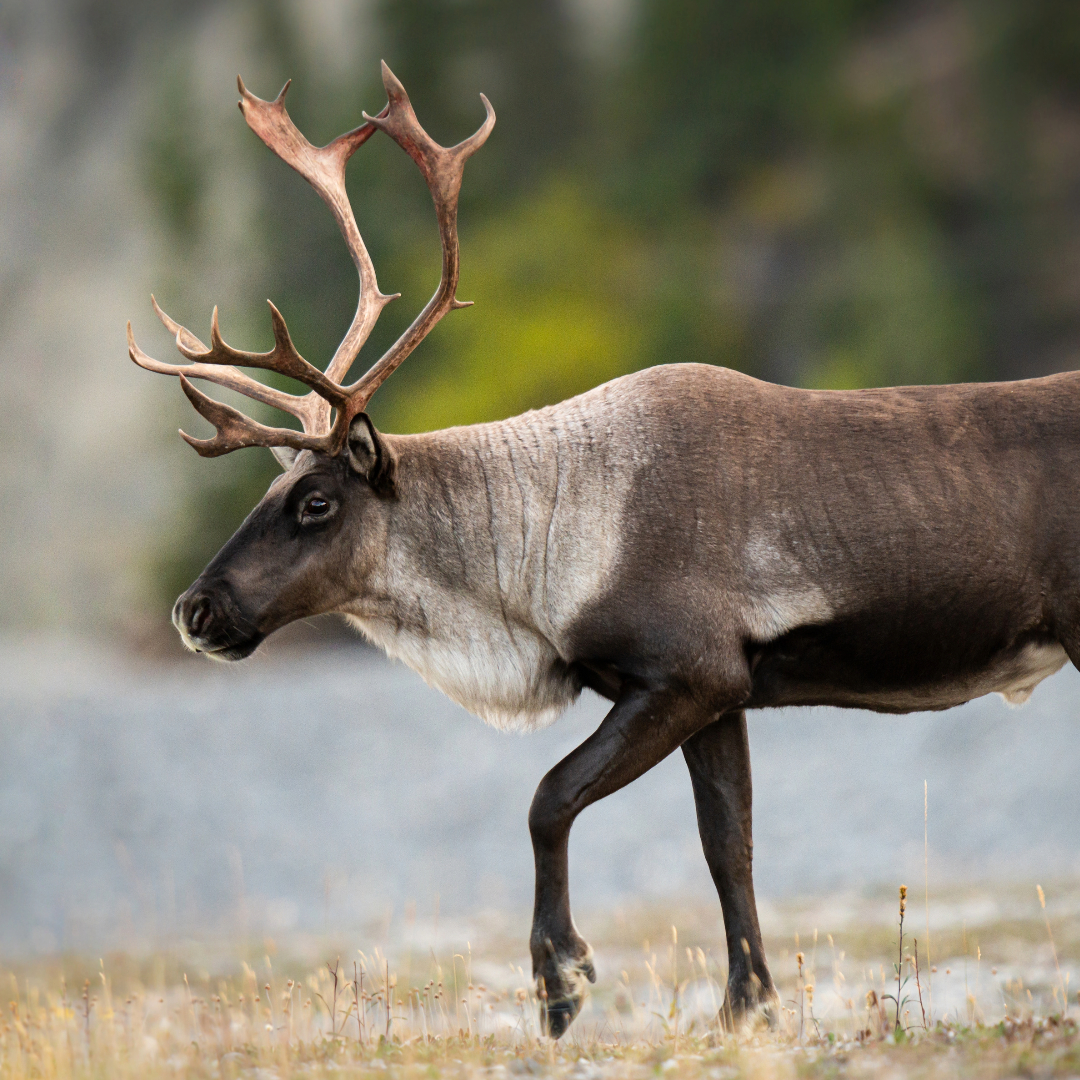
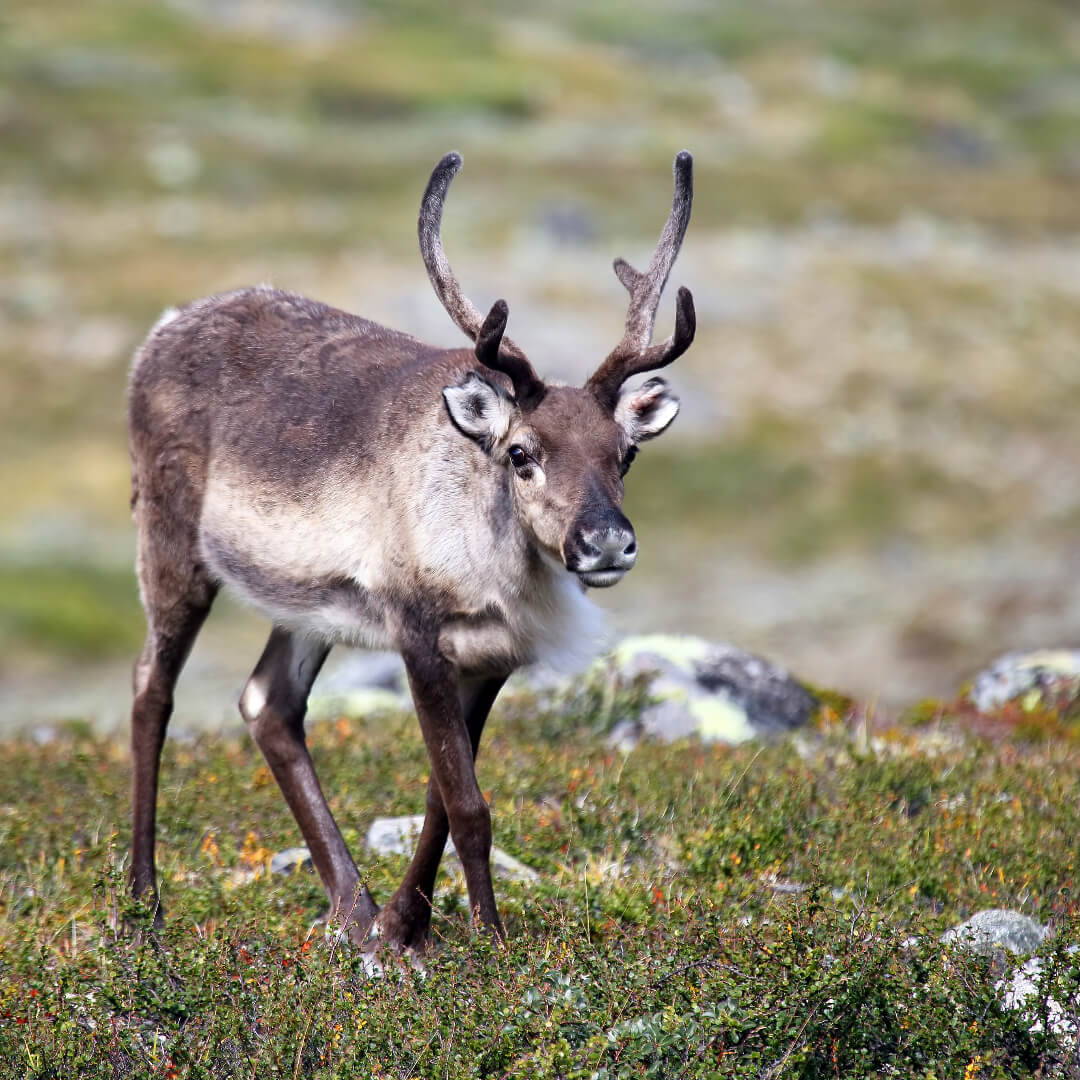
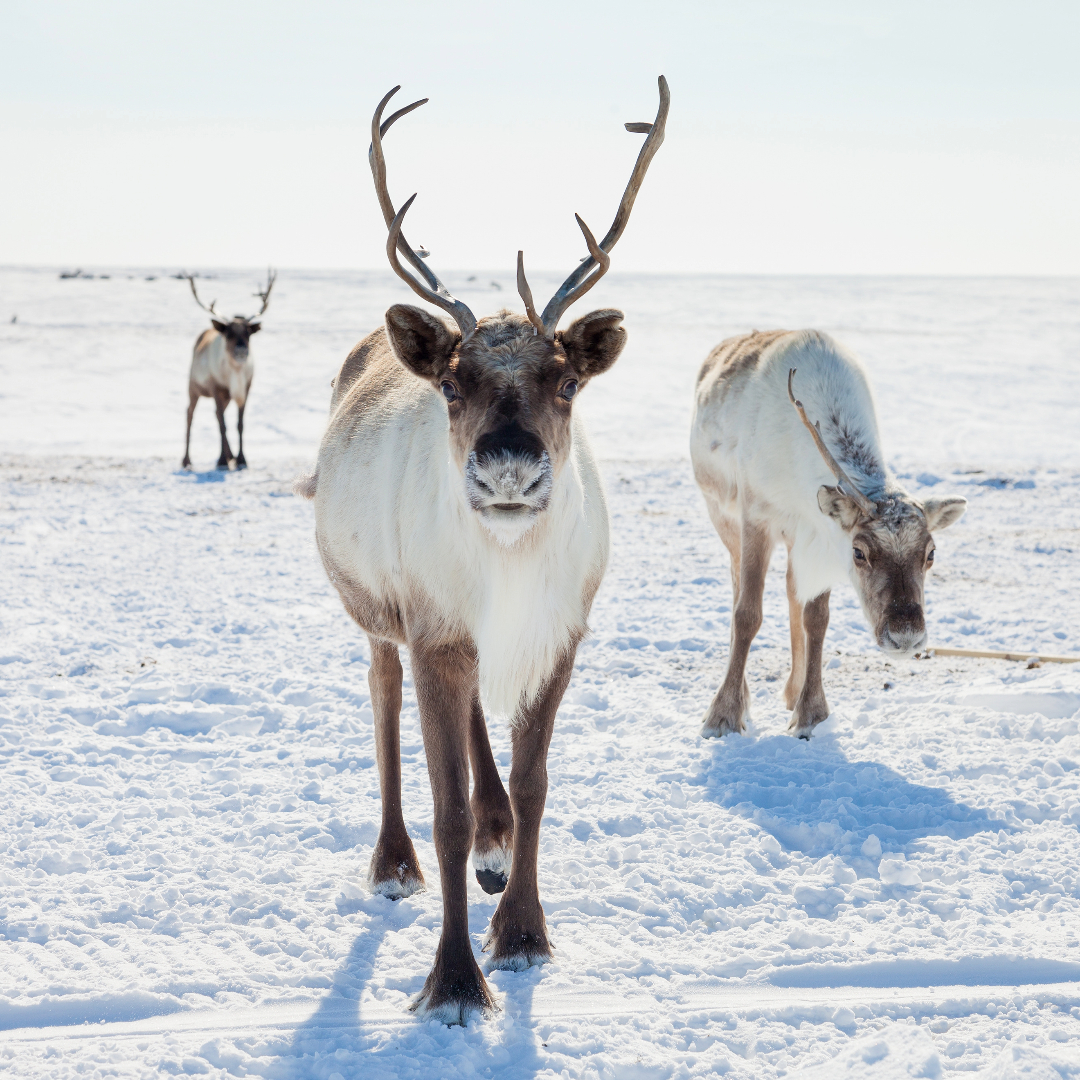
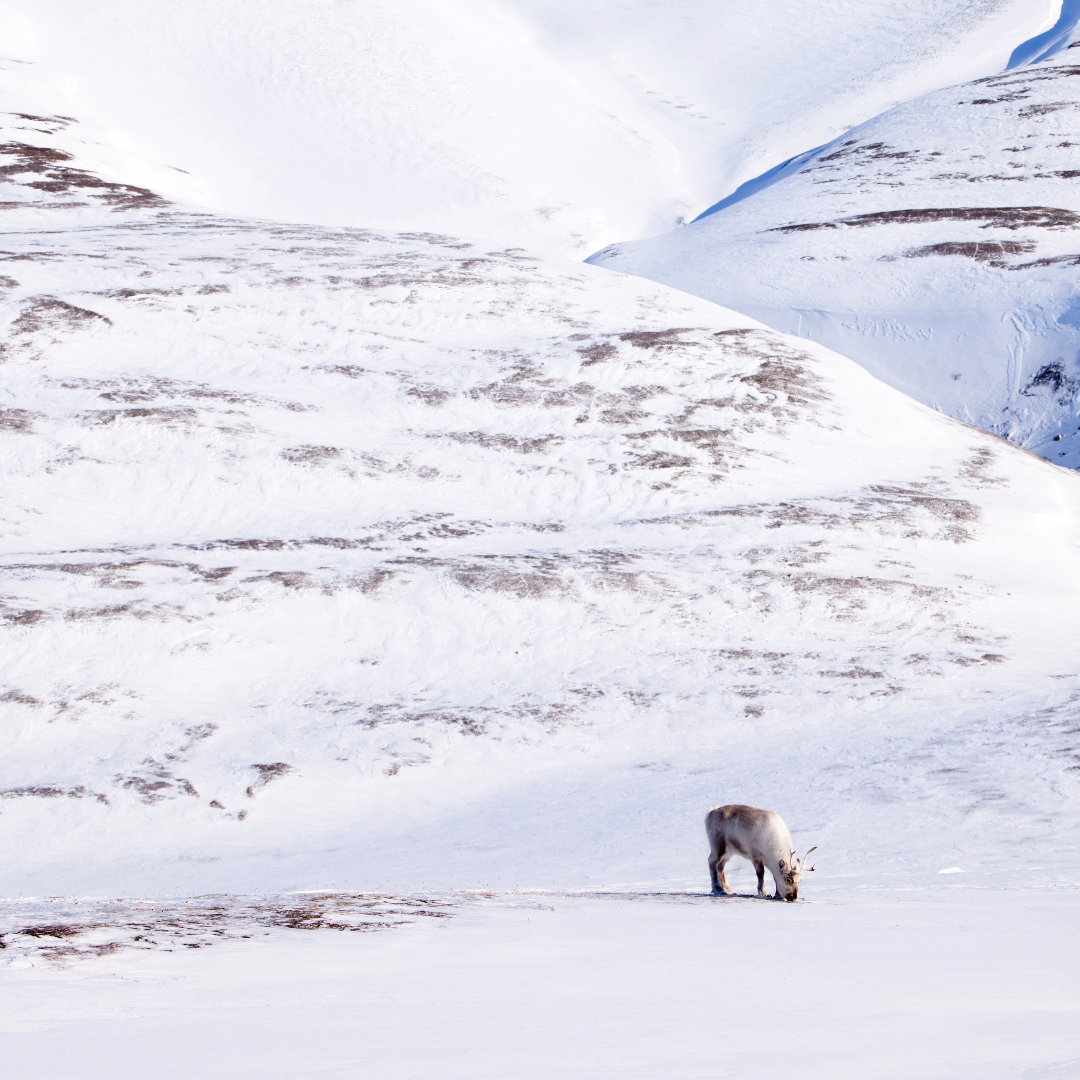
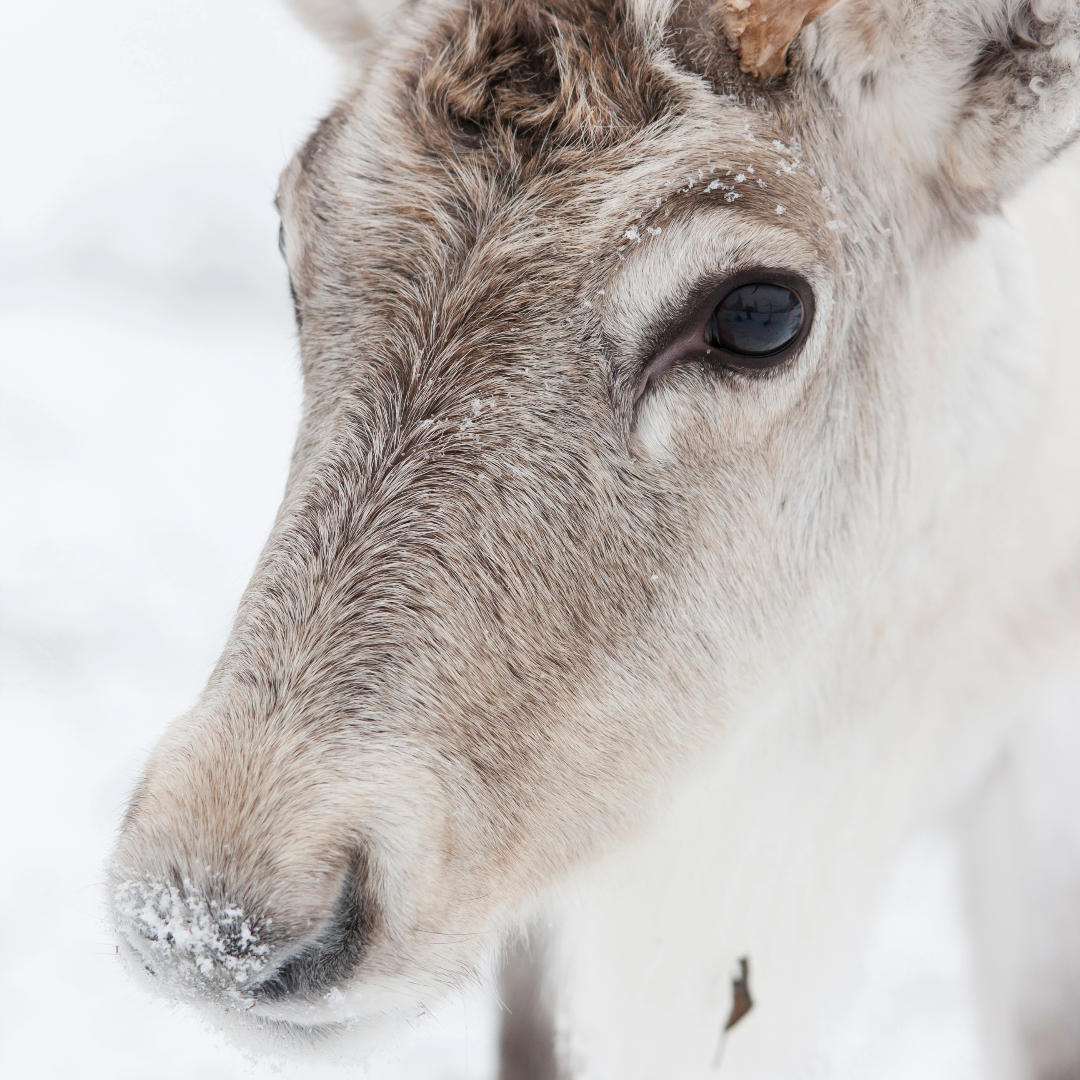
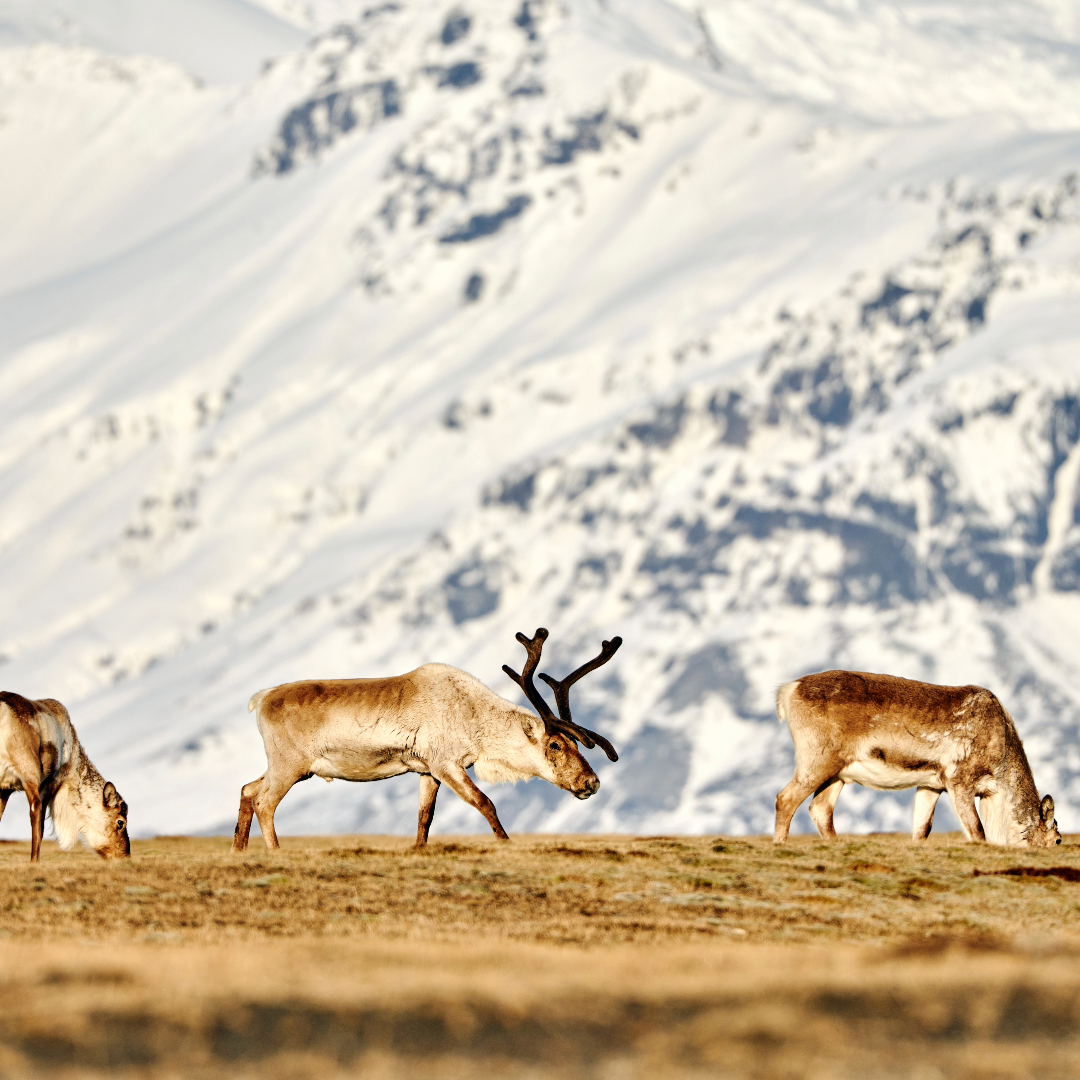
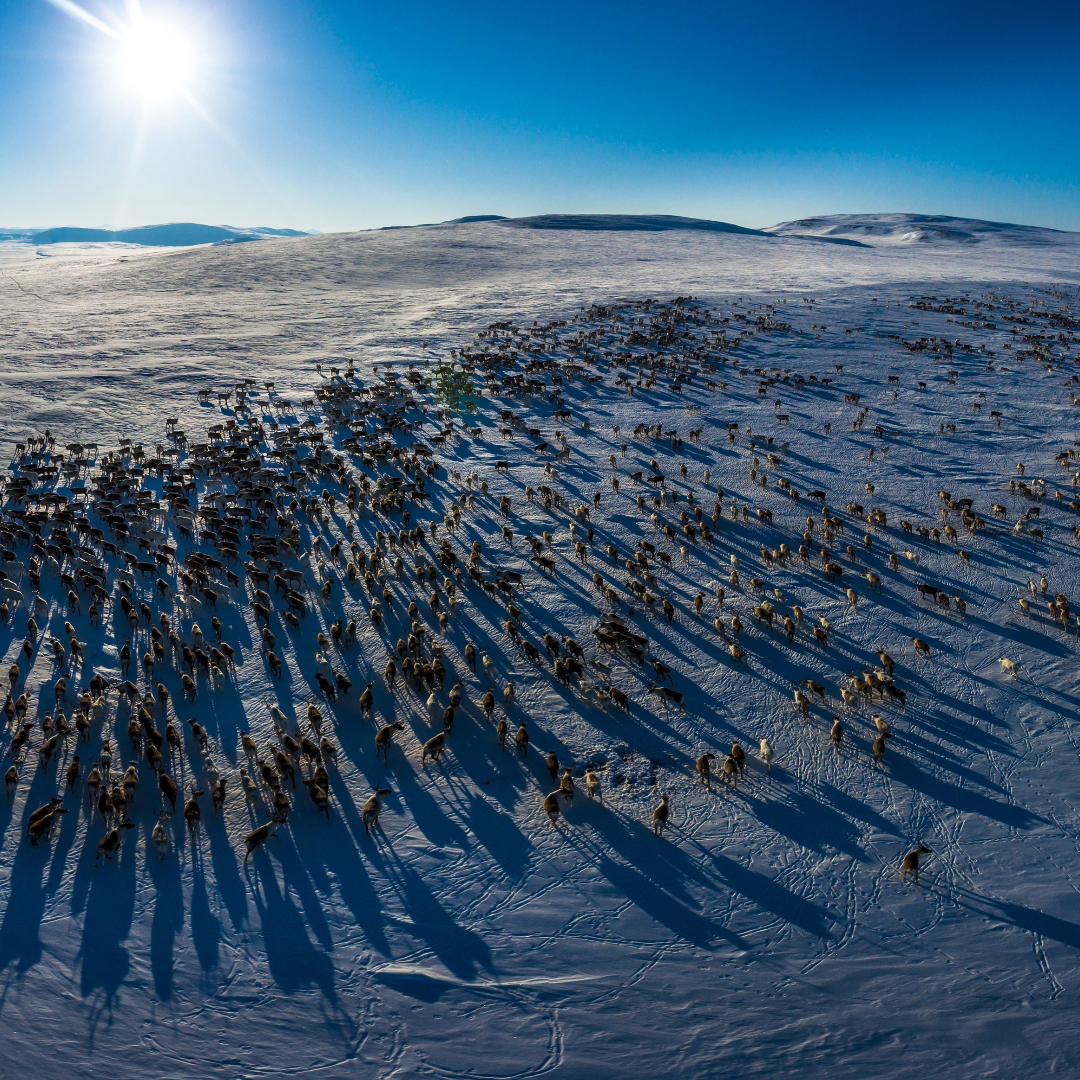
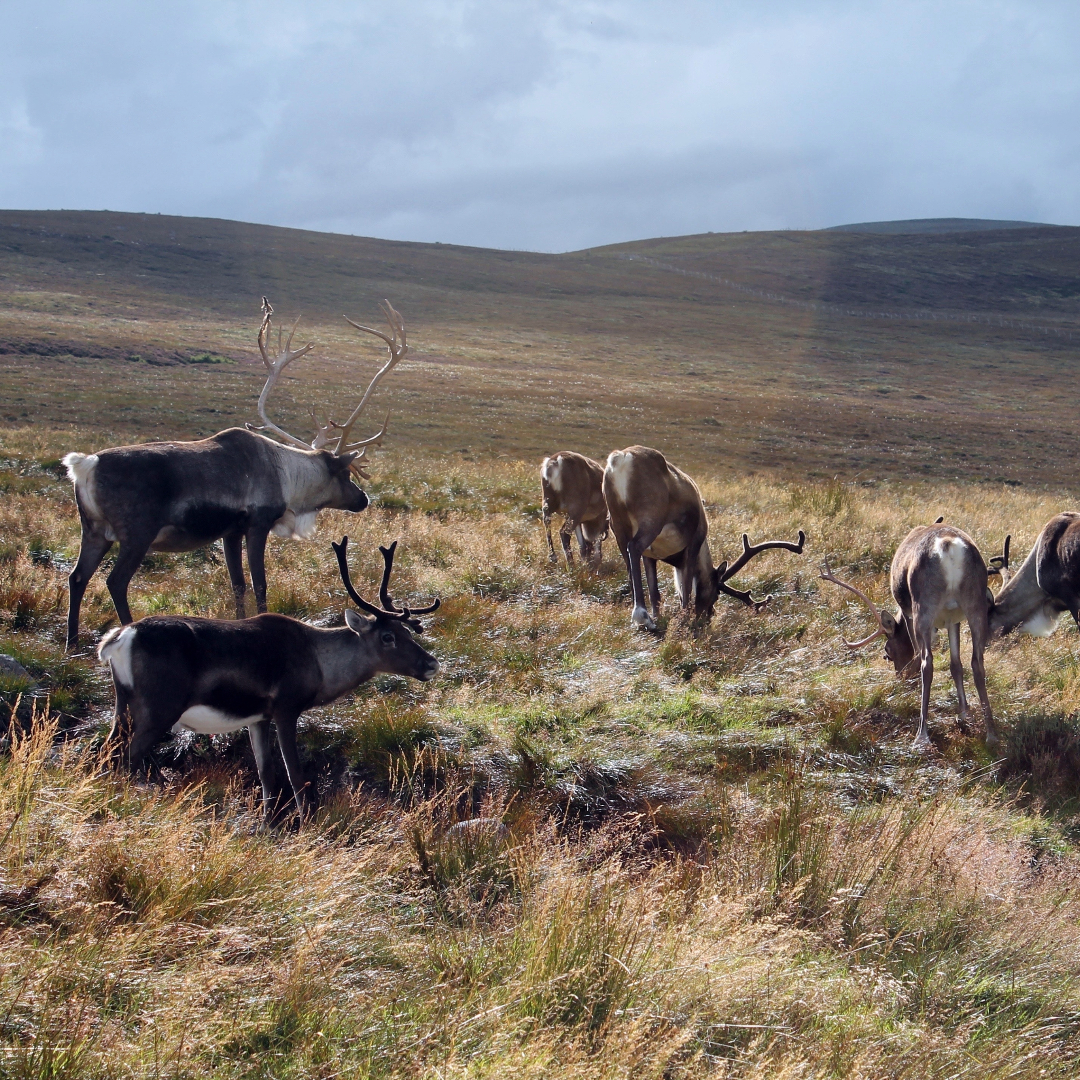
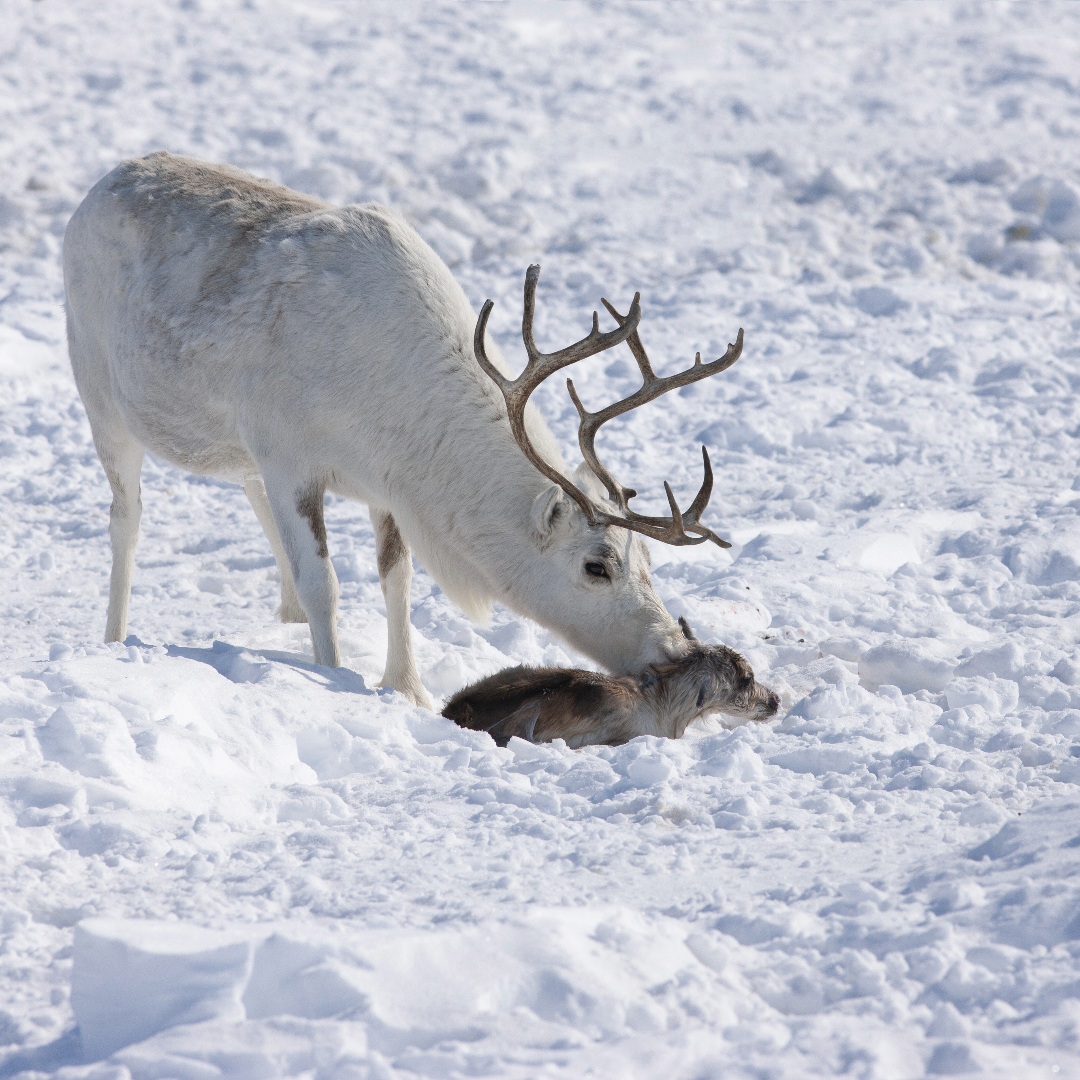
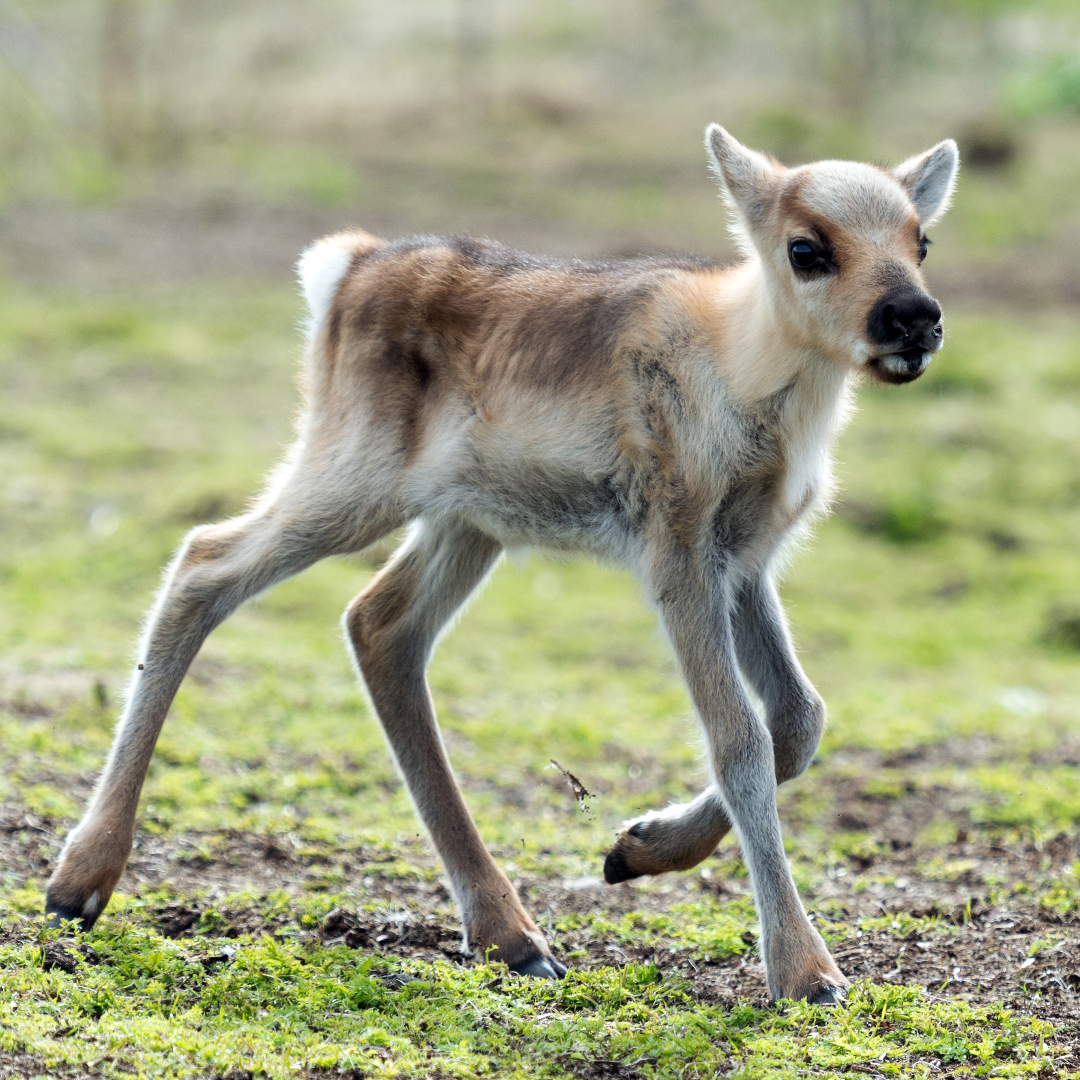
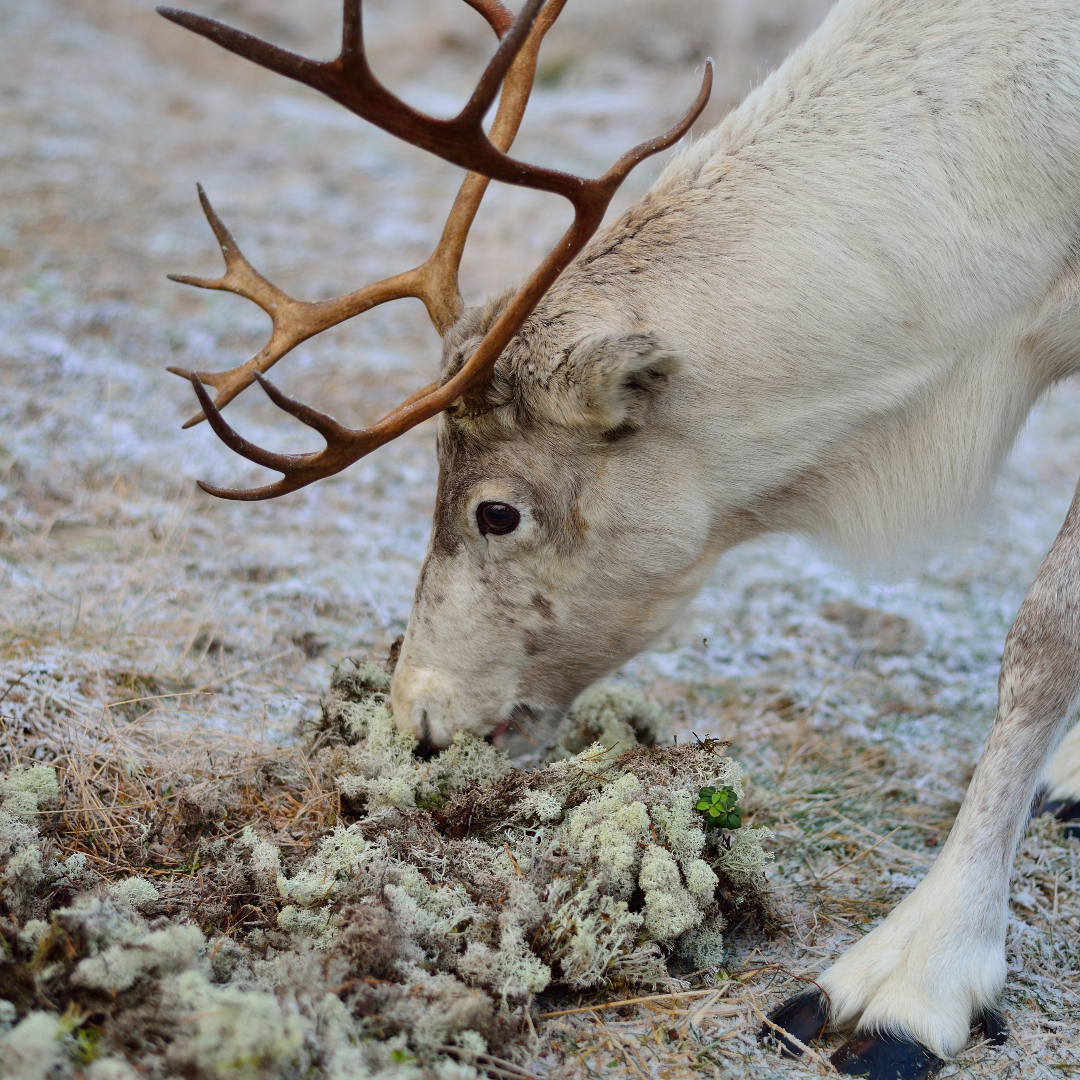
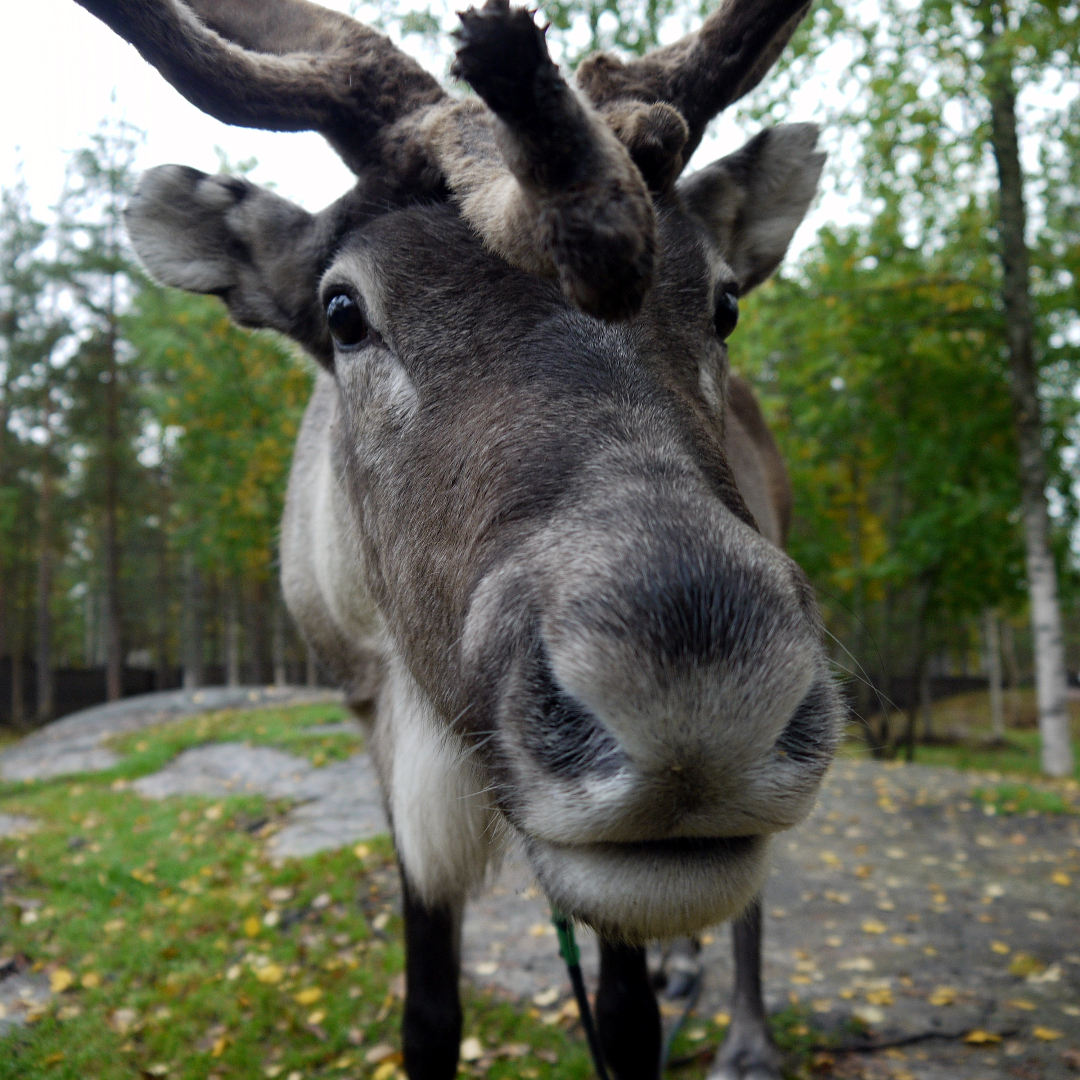
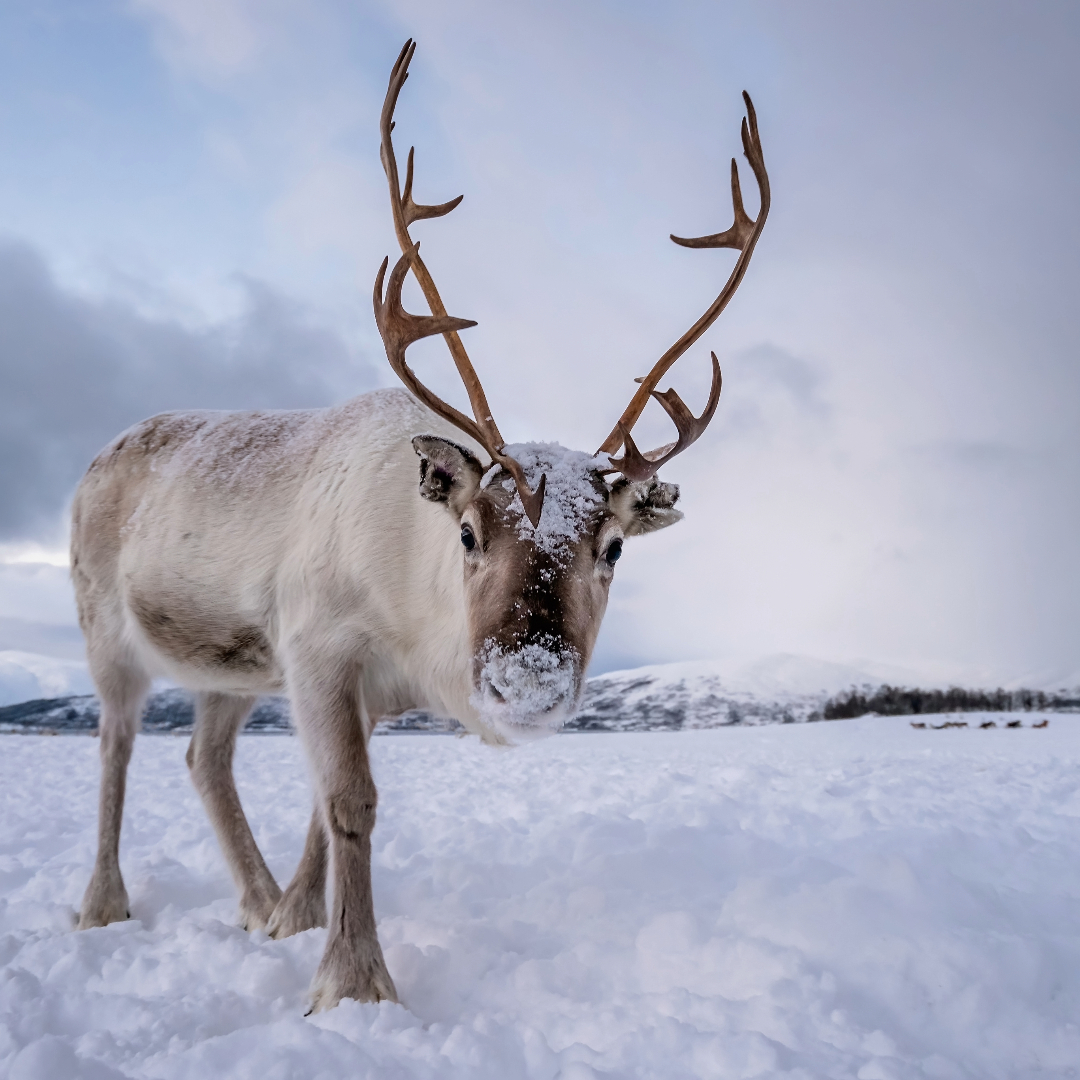
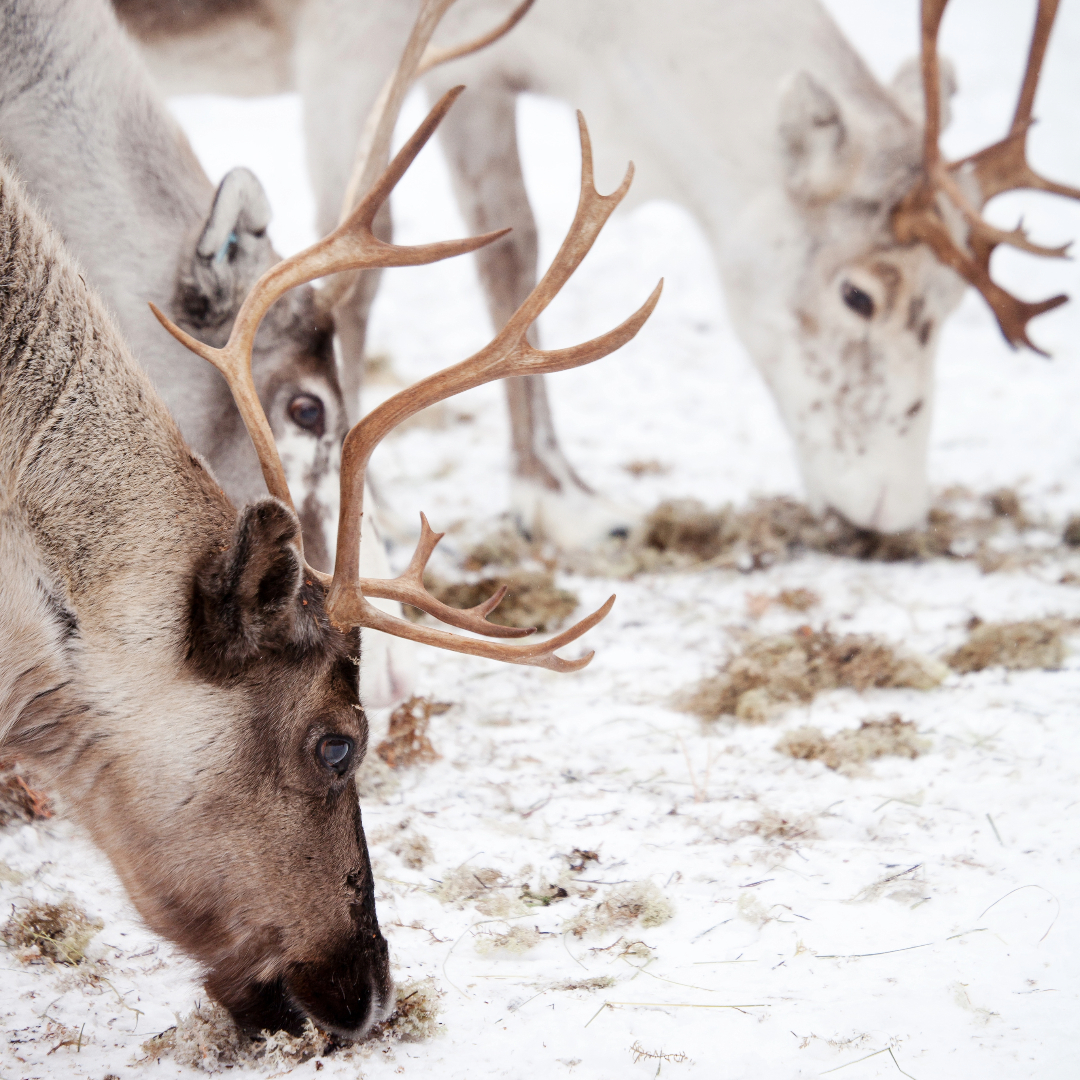
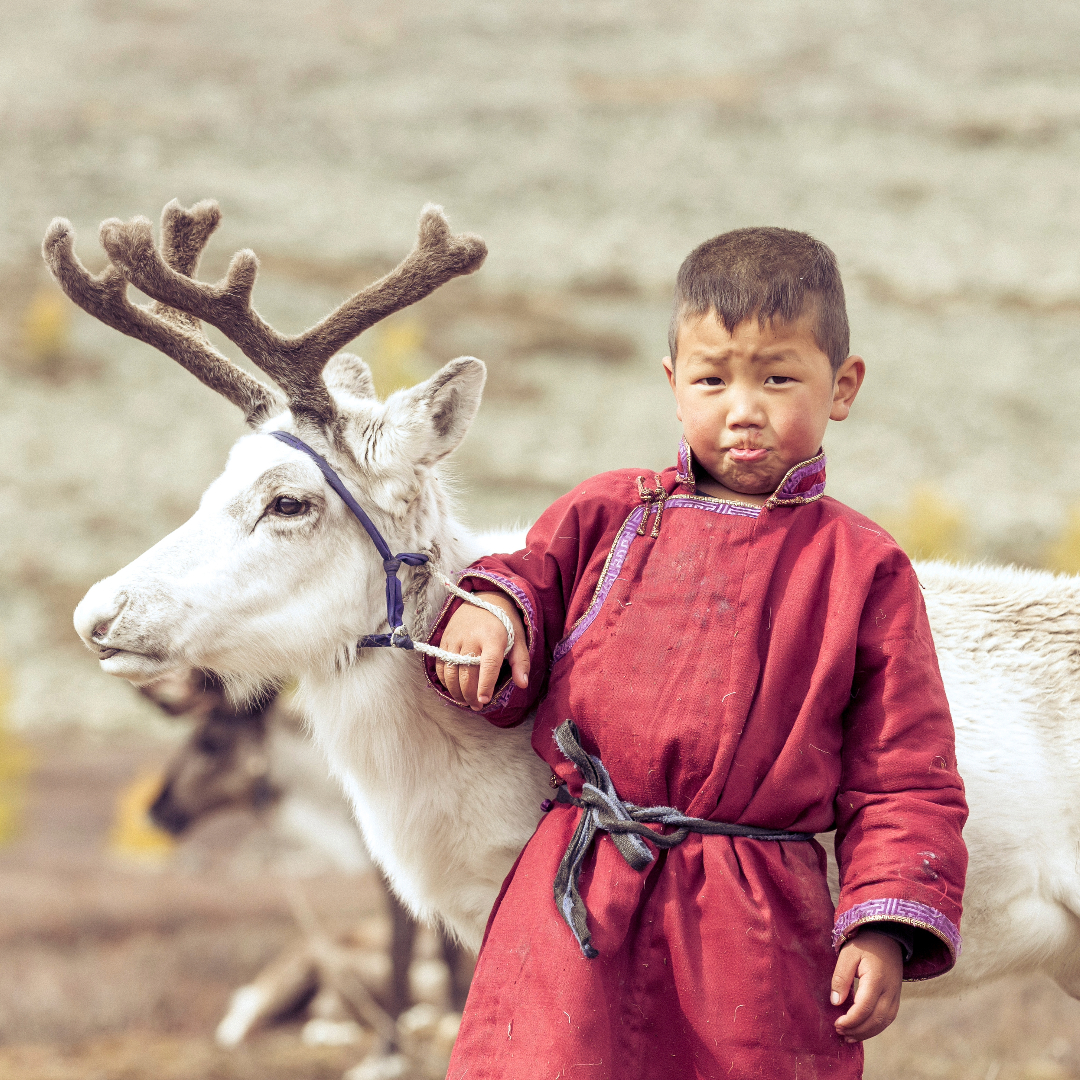
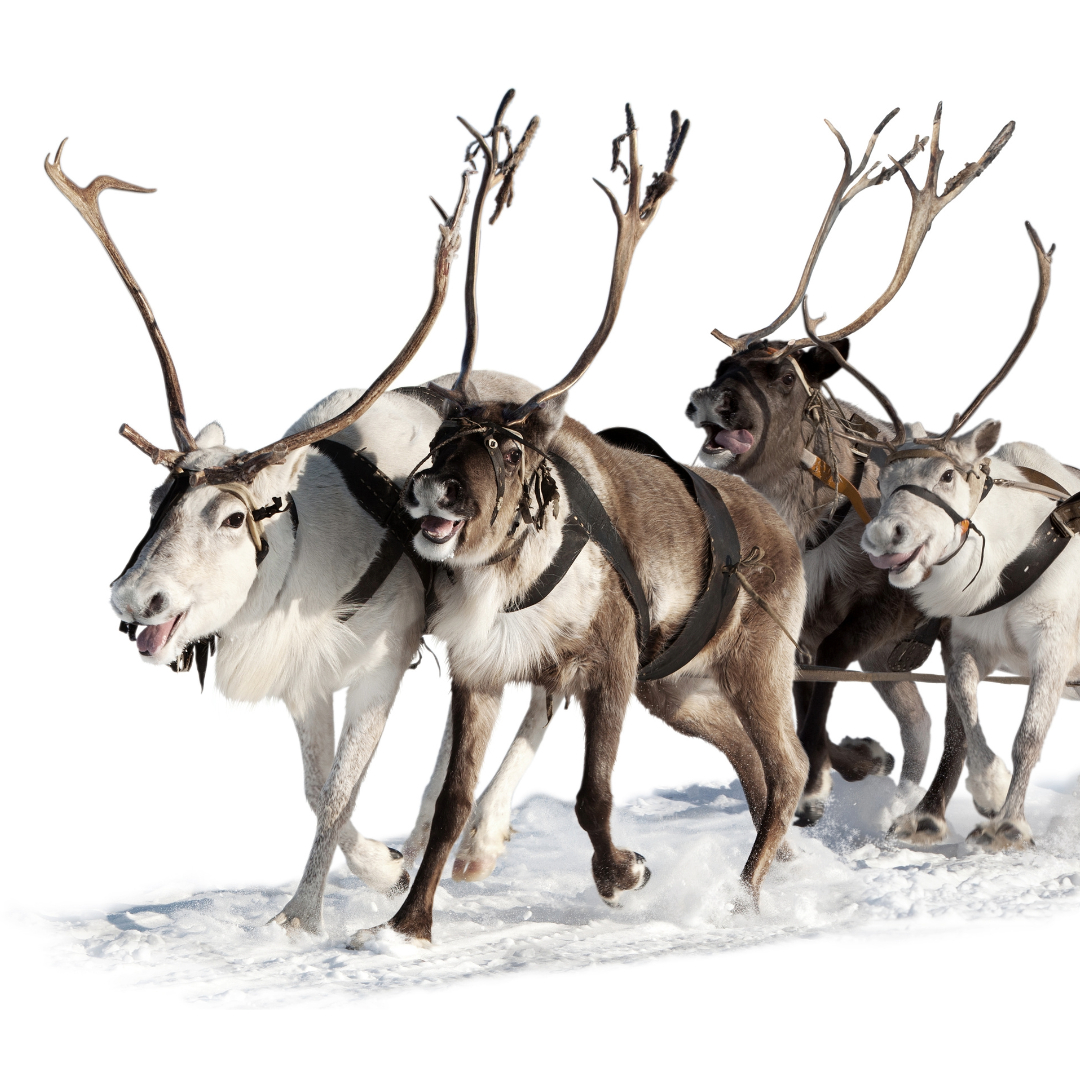
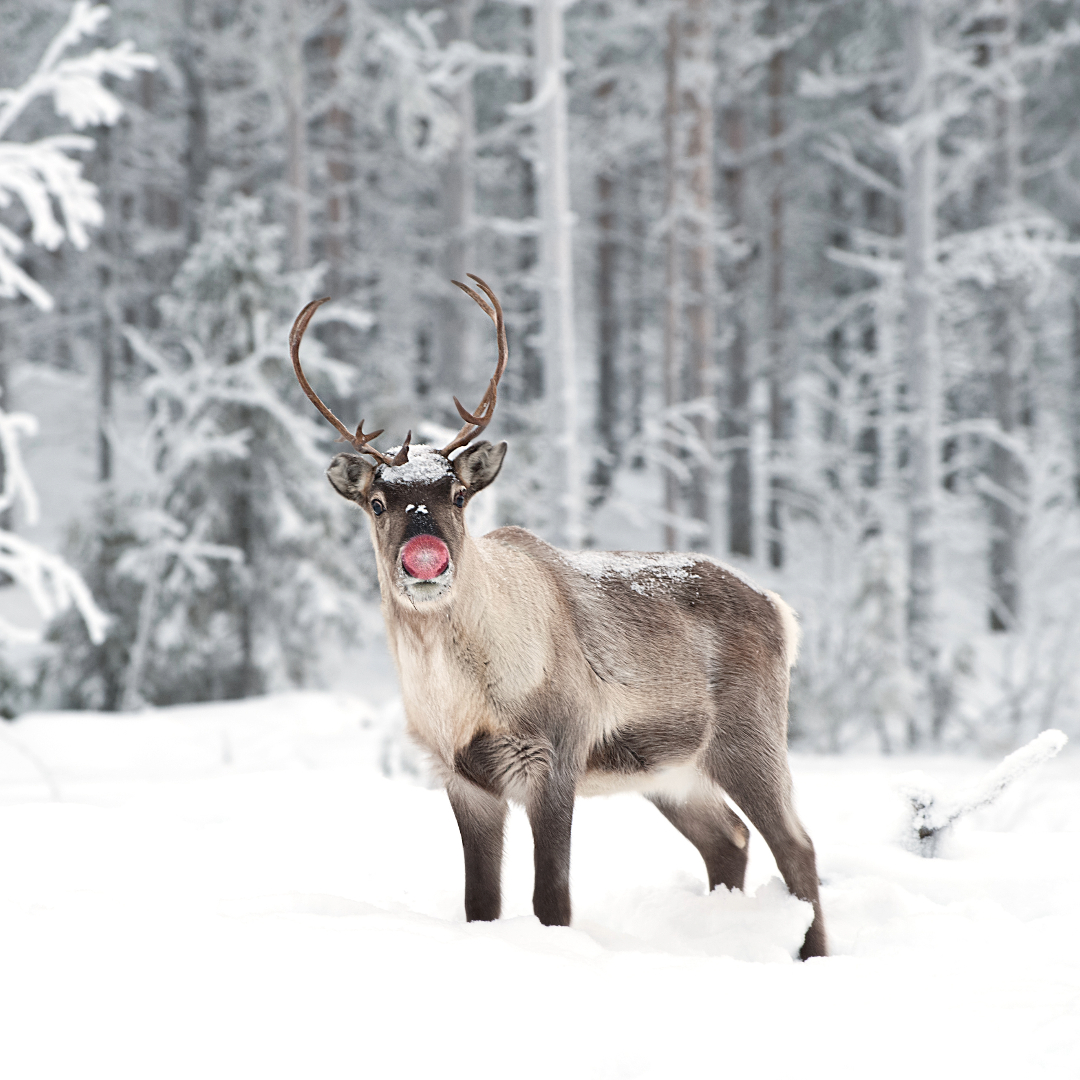
24 FASCINATING FACTS ABOUT REINDEER
























History, distribution & habitat
The natural distribution of the reindeer extends across the arctic and sub-arctic regions of northern Europe, Siberia and North America where they live in tundra, woodland and mountains. In many parts of the world they have been herded for centuries and are an important source of meat, milk and hides to some Arctic and Subarctic people who live an migrate with their herds. They are also used as pack animals.
Reindeer were once native to Britain but the last records of wild ones date back to around 800 years ago. In 1952 two bulls and five cows were brought from Sweden to Scotland as an experiment. They thrived and were supplemented by yet more animals in their paddocks on the northern slopes of the Scottish Cairngorms. Today the herd numbers about 150 animals which, in addition to their regular paddocks, are allowed to graze free-range on the surrounding mountain tops and frequently appear on neighbouring estates or the ski slopes of Aviemore.
During the summer reindeer feed on grasses, sedges, leaves and the new growth of trees such as birch, larch and willow. Mushrooms are taken in season. During the winter a lichen known as reindeer moss, which the animals frequently have to dig for with their antlers, is an important food source.
Breeding, behaviour & lifecycle
The rut takes place from late September until early November, and during this time the bulls will fight to get access to breeding females. The single calves are born in May or June and weigh around 6kg.
Reindeer prefer to live in herds, and in some parts of their ranges these can number up to 500,000 animals when smaller groups band together for spring migration. Migrating reindeer in North America have been known to travel as much as 5,000 km in a year though European reindeer migrations are rather shorter. They can run as fast as 50 mph.
Reindeer are probably the best swimmers of all the deer, and regularly take to the water when on migration or to escape predators. They can cover large distances in this way and have been recorded swimming as fast as 6mph.
REINDEER AND CHRISTMAS
Reindeer traditionally pull Santa’s sled when he delivers presents on Christmas Eve. In the 1823 poem ‘A Visit from St Nicholas’ by Clement Clark Moore the deer were given the names Dasher, Dancer, Prancer, Vixen, Comet, Cupid, Dunder and Blixem (later changed to Donner & Blitzen).
Rudolph only joined the team in 1939 when Robert L May wrote a story titled ‘Rudolph the Red-Nosed Reindeer’ which later formed the basis for the popular song.
In many parts of the world reindeer are indeed trained to pull sleds, but it is only on Christmas Eve that they actually have the magical ability to fly.





